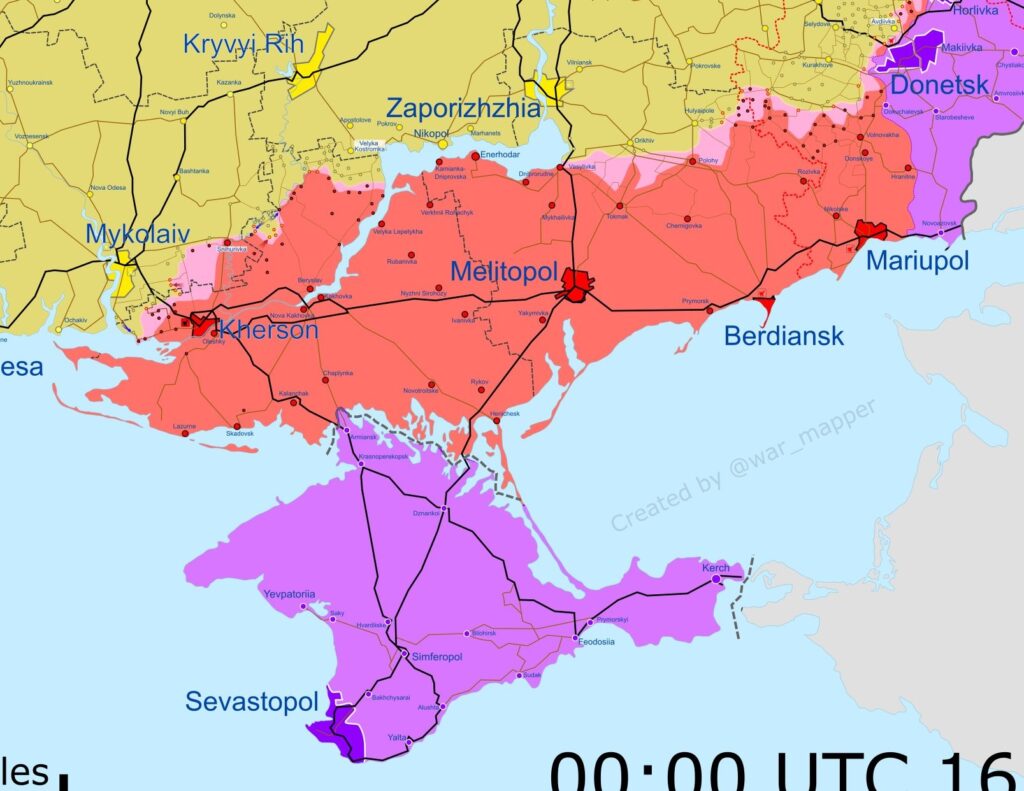One of the reasons I think studying history is so important is I strongly believe that studying history helps to predict the future course of events. Historical events do follow certain patterns. Of course no two situations are exactly identical just as no two people are, even twins. But well written and insightful historical accounts can give us some context by which to predict current events. With that in mind I wanted to state my prediction for how the war in Ukraine is likely to proceed short term.
After the successful Ukrainian counteroffensive in the Kharkiv region I do not expect the Ukrainians to push much further east there. I expect the Ukrainians to consolidate their gains and perhaps try to move somewhat farther east, but not much.
I also don’t expect the Ukrainians to be very aggressive in trying to push out the Russians around Kherson at this point. There is no real advantage in the Ukrainians pressing the issue in Kherson when the Russian forces that have gathered in the region have very lengthy and difficult supply lines with winter approaching. Unlike the Russians, the Ukrainians are not in the habit of needlessly and recklessly sacrificing their soldiers’ lives. Better to cause the Russians to bleed out from a thousand cuts than for the Ukrainians to drive the Russians out. With the bridges the Russians need to use to adequately resupply their frontline troops in Kherson already destroyed the Russians are in a world of hurt. Less costly for the Ukrainians to just let the Russians whither away. The goal of the Ukrainians in Kherson is to hold the Russian forces there, and force the Russians to resupply their forces there.

I expect the Ukrainians to bypass Luhansk and Donetsk and push to the south southeast toward the shore of the Sea of Azov near Berdiansk, probably aiming toward the region between Berdiansk and Mariupol, but not actually into either city. The Ukrainians will wait until they have amassed sufficient forces and have a decided advantage over the Russian troops in the area. The Ukrainians will also wait until they have the weaponry that they believe will be able to take out the Kerch Bridge from that shoreline. I say that because the goal of this southern push will be to cut off the Russian supply routes coming west from Russia along the northern shore of the Sea of Azov, including M14, as well as the Russian supply routes coming west from Russia south of the Sea of Azov, namely over the Kerch Bridge. The Ukrainians will hit the Kerch Bridge from the shore near Berdiansk over the Sea of Azov.
A lot has been written about the difficulty of destroying such a large bridge as the Kerch Bridge but the Kerch Bridge really is not one bridge but two. The first bridge is a four-lane roadway for cars and trucks. the second is a two-track rail bridge. The Ukrainians do not have to even knock out a span on either bridge or even do the type of damage that was done to the Antonovskiy Bridge, thus punching holes in the road, to cause havoc for the Russians. Due to the Russians over reliance on rail transport, the Ukrainians only need to hit the rail bridge hard enough to make it unsuitable for trains to go over. Damaging railroad tracks enough to make it unsafe for trains to transit over is much easier than damaging a four-lane roadway enough to make it unsafe for a trucks to transit over. Damaging one line of exposed metal railroad track enough to derail a train is much easier than degrading the structural integrity of a metal structure reenforced in concrete enough to cause a truck to fall through.
If the Ukrainians can succeed in these two tasks, cutting Russia’s supply lines west overland both north and south of the Sea of Azov, the already low morale of the under supplied Russian troops in southeast Ukraine will plummet even further. And no army, even one with a high morale, can fight for long without food, water, and ammunition. Putin’s game could be essentially over at that point.